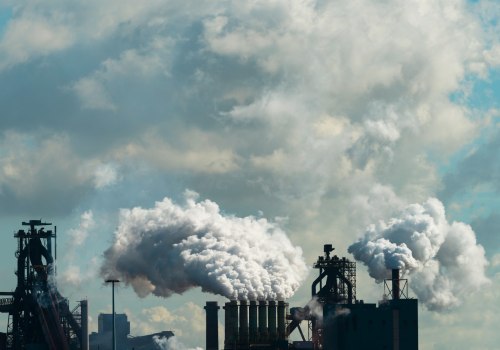As an environmental expert with years of experience in studying the effects of pollution on our air and water, I have seen firsthand the drastic improvements that have been made since the implementation of the Clean Air and Water Act. This landmark legislation, which was approved by Congress on October 18, 1972, has played a crucial role in reducing air pollution and improving the quality of our nation's waterways. As we approach the 50th anniversary of this act, it is important to reflect on its effectiveness and the challenges that still remain. One of the most significant achievements of the Clean Air Act has been the decrease of approximately 50% in emissions of major air pollutants since 1990.
This has resulted in preventing hundreds of thousands of cases of serious health effects each year. Before this legislation was put into place, many American rivers were so contaminated that they were catching fire. The infamous 1969 fire on the Cuyahoga River in Cleveland, Ohio was a wake-up call for the nation and sparked a national dialogue about the urgency of addressing air pollution. The Clean Air Act provided the federal government with a legal framework to regulate pollution and allocate funds to help states build wastewater infrastructure.
This led to a rapid improvement in water quality not only in Delaware, but also in many other bodies of water that had become dumping grounds for industrial waste. As an expert, I have seen firsthand how these improvements have positively impacted both human health and the environment. However, it is important to note that the Clean Air Act has faced pressure from different presidential administrations and their priorities. Despite this, high water quality standards have resulted in success stories like Steve Meserve's fishing nets being filled with fish instead of car parts.
This is a testament to the effectiveness of this legislation in protecting our waterways and the species that call them home. One of the key aspects of the Clean Air Act is its focus on preventing air quality from deteriorating. This is especially important in areas where the air is already relatively clean. In these cases, the requirements are based on maintaining the current air quality standards.
As an expert, I have seen how this approach has helped to prevent further pollution and maintain a healthy environment for all. Despite the undeniable success of the Clean Air and Water Act, there are still challenges that need to be addressed. One of these challenges is the discovery of widespread contamination of rivers, lakes, and groundwater by persistent chemicals known as PFAS. This has raised concerns about the potential risks to human health and highlights the need for continued efforts to protect our water sources.
Furthermore, it is important to acknowledge that historically racist and discriminatory practices have resulted in low-income communities and communities of color bearing the brunt of air pollution. These communities are often already overwhelmed by pollution, making them more vulnerable to its harmful effects. As an expert, I believe that addressing these environmental injustices should be a top priority in our efforts to protect our air and water. In conclusion, as we celebrate the 50th anniversary of the Clean Air and Water Act, it is clear that this legislation has had a significant impact on improving the quality of our air and water.
However, there is still work to be done in addressing new challenges and addressing environmental injustices. As an expert, I am hopeful that with continued efforts and a commitment to protecting our environment, we can build upon the success of this landmark legislation for generations to come.










